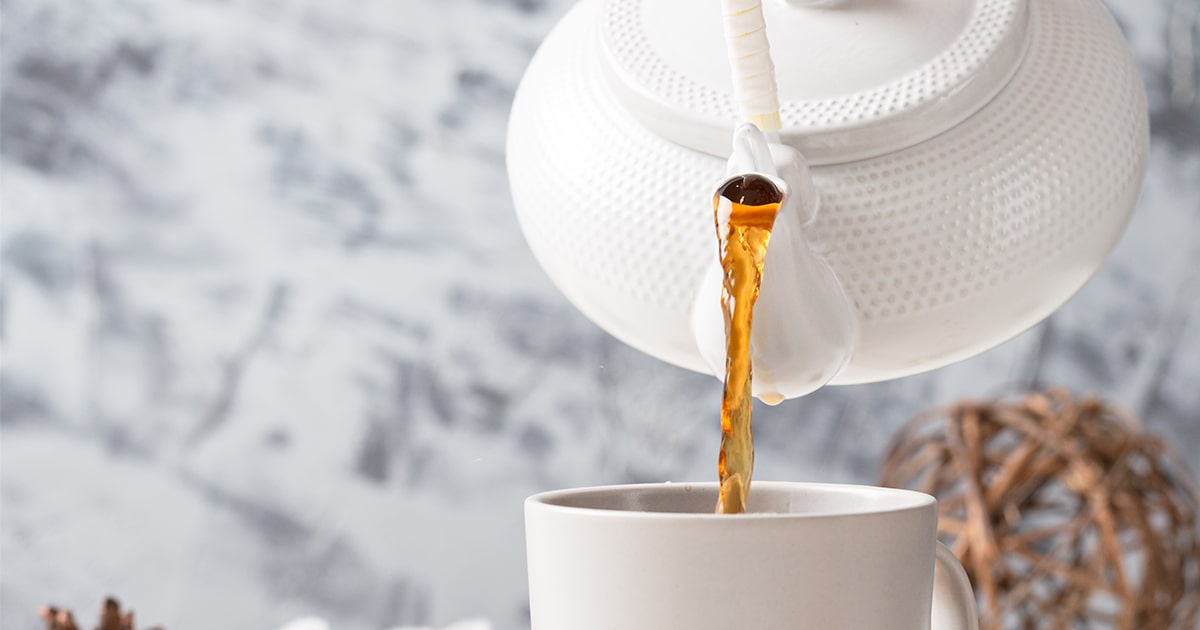Once you know the basics, brewing the perfect cup of tea is easy! If you can boil water, you can make tea. It is essentially a game of manipulation and adjustment of 3 elements:
The temperature of the water;
The brewing time;
The amount of tea used.
With a little practice, brewing a great cup of tea is easy and will quickly become second nature.
INFUSION TIPS
1) Do not exceed the suggested brewing time to avoid too much bitterness. If you prefer a strong tea, use more leaves instead.
Most teas are pleasant when steeped for 2 to 5 minutes.
If your tea is getting too bitter, you may want to decrease the brewing time or lower the water temperature. If your tea is too weak, you may want to increase the brewing time slightly, increase the water temperature, or simply use more tea leaves.
2) The water quality
Even the best of teas will be affected by the water used to brew them.
Always start with the most recent and purest water source available. Avoid distilled or mineral water which will weaken the flavor of the tea or give it a “chemical” taste. Filtered tap water or bottled spring water works best and will provide a lively and aromatic infusion.
3) heat the teapot
To maintain a constant brewing temperature, it is advisable to use a teapot or a cup with a lid. It will also keep the aromas of the brew. You can also preheat your teapot by rinsing it with hot water before use.
4) Portion
Technically, the serving size for one cup of tea is 2 grams of loose leaf tea (or 1 tea bag) per 8 ounce cup of water. This is equivalent to a teaspoon.
However, some teas or herbal teas will be infused better if you decrease or increase the dosage. For example wulong is heavy and dense you need a little less per cup unlike chamomile which is light with big chunks you might want to use a tablespoon.
5) Add milk, lemon, sugar or honey
Some teas will be enhanced by adding milk, sugar, lemon or honey, but others will be totally wasted. Follow your favorite sommelier’s instructions for each tea and let your personal taste guide you.
6) Leaves before water and not the other way around
It is important to always start with the tea leaves and then add the water. The action of pouring water over the leaves creates a small swirl effect that perfectly mixes the tea and water. This is when the brewing process begins. If you add leaves to an already filled cup or teapot, it may overflow or the tea leaves will simply float on top, rather than being totally submerged.
7) Infusion area
Tea expands 2 to 5 times its size in water. Therefore, it is best to use infusers or sachets that allow plenty of leeway for the leaves to develop. Large filters provide plenty of room for water to circulate around the leaves to release better flavor and more aroma.
8) Don’t judge by color
Different types of tea will give their own unique hue. For example, white tea naturally creates a pale golden color, while black tea will produce an intense ruby red or chocolate brown. Don’t rely on the color to tell if the tea is ready, but on the brewing time.
9) Multiple infusions
High quality tea can be brewed multiple times. Increase the steeping time by one minute with each subsequent brew.
10) iced tea
Two types of infusions are available to you for iced tea: hot or cold infusion
Hot: 2 teaspoons in 8 oz of hot water at 95C for 4-5 minutes. Pour into tall glasses filled with ice cubes.
Cold: 1 tablespoon in 500ml of cold water and place in the refrigerator for 3 to 12 hours. Is the brew too strong? Just add water. Cold brewing avoids the bitter taste of some teas, especially green teas.
11) Storage space
Store the tea in a cool, dry place, away from direct sunlight and strong smells. Do not refrigerate. Because tea readily absorbs other scents, you should not store tea in your spice cabinet.
12) Retention period
Studies suggest that tea (and, in fact, any fresh fruit or vegetable) can lose vitamins and antioxidants over time. It is suggested to drink tea within one year of purchase, although the tea industry generally considers 2 years to be acceptable. Tea over 2 years old will not be bad, it will simply lose freshness, flavor and have less health benefits.

